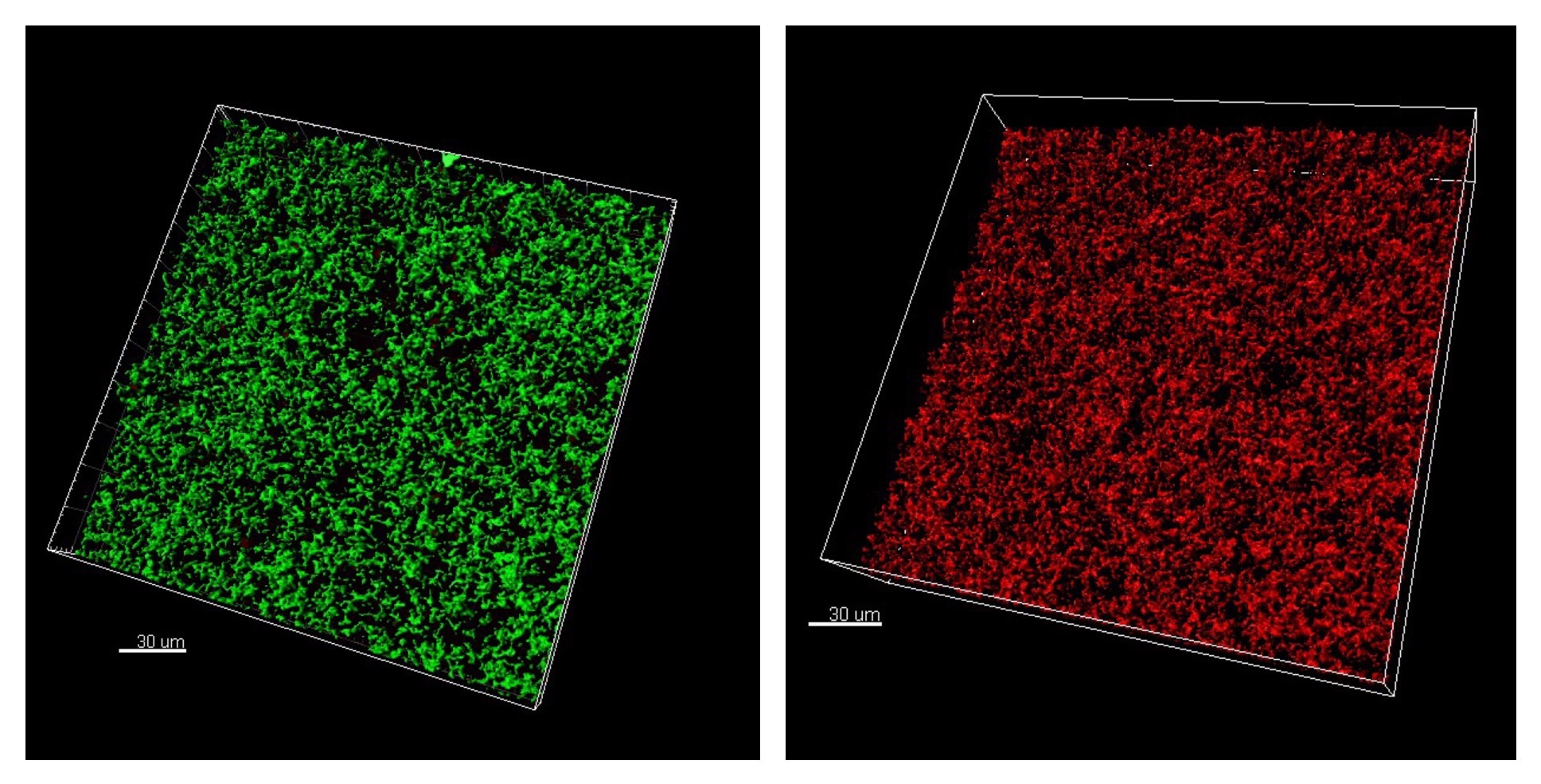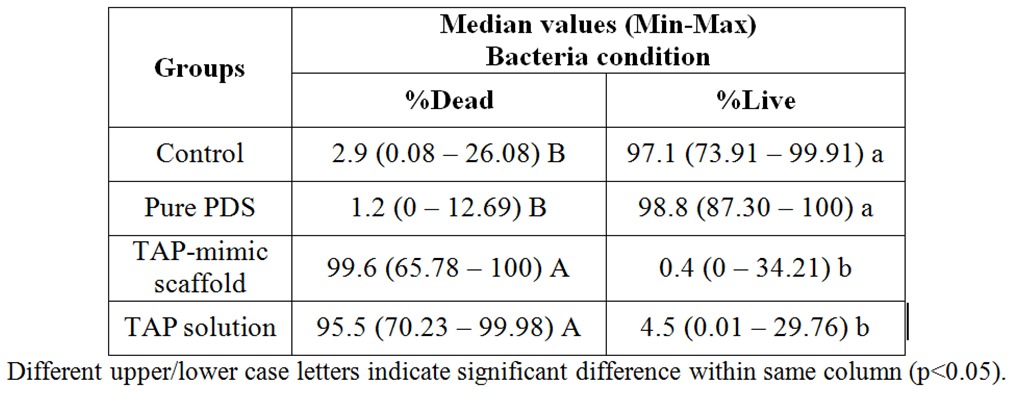IADR Abstract Archives
Antimicrobial Effects of TAP-mimic Antibiotic-Containing-Scaffolds On Dual-Species Infected Dentin Biofilm
Objectives: The current standard for pulpal regeneration is to first eliminate/inhibit bacterial growth within the root canal. Recent research has shown necrotic immature succedaneous teeth are prevalently infected with Actinomyces naeslundii. Meanwhile, Enterococcus faecalis was found to be the main cause in refractory infections after antibiotic administration. Novel antibiotic-containing electrospun nanofibrous scaffolds have demonstrated impressive results when compared to the current gold standard, triple antibiotic paste, (TAP=ciprofloxacin-CIP, metronidazole-MET, and minocycline-MINO) from a cytocompatibility standpoint. The purpose of this study was to evaluate the antimicrobial effects of novel TAP-mimic antibiotic-containing scaffolds against a dual-species infected dentin biofilm using confocal laser scanning microscopy (CLSM).
Methods: Antibiotic-containing (MET, CIP, and MINO) polymer (Polydioxanone-PDS) solution (30 mg of each antibiotic/mL of polymer solution) was spun under optimized conditions into fibers to obtain the TAP-mimic scaffolds. Human teeth were vertically sectioned along the mid-sagittal plane to obtain 16 dentin blocks (4×4×1 mm3, n=4). The specimens were sterilized, distributed into 24-well plates containing BHI broth, and inoculated with A. naeslundii and E. faecalis for 7 days to allow biofilm formation. Infected dentin specimens were exposed for 7 days to the following groups: TAP-mimic and PDS scaffolds, TAP solution (50 mg/mL), and an untreated control (infected dentin/saline solution). CLSM was performed (Live/Dead® Assay) to assess antimicrobial effectiveness. Data were analyzed at 5% significance level.
Results: TAP-mimic scaffold had the highest percentage of dead bacteria followed by the TAP solution. Both groups led to significant (p<.05) reduction in percentage of viable cells when compared to the controls (untreated and PDS scaffold). No statistical (p>.05) difference was found between the antibiotic-containing groups.
Conclusions: Collectively, the novel TAP-mimic scaffold holds significant clinical potential for root canal disinfection, as it demonstrated nearly complete eradication of the dual-species biofilm.
Methods: Antibiotic-containing (MET, CIP, and MINO) polymer (Polydioxanone-PDS) solution (30 mg of each antibiotic/mL of polymer solution) was spun under optimized conditions into fibers to obtain the TAP-mimic scaffolds. Human teeth were vertically sectioned along the mid-sagittal plane to obtain 16 dentin blocks (4×4×1 mm3, n=4). The specimens were sterilized, distributed into 24-well plates containing BHI broth, and inoculated with A. naeslundii and E. faecalis for 7 days to allow biofilm formation. Infected dentin specimens were exposed for 7 days to the following groups: TAP-mimic and PDS scaffolds, TAP solution (50 mg/mL), and an untreated control (infected dentin/saline solution). CLSM was performed (Live/Dead® Assay) to assess antimicrobial effectiveness. Data were analyzed at 5% significance level.
Results: TAP-mimic scaffold had the highest percentage of dead bacteria followed by the TAP solution. Both groups led to significant (p<.05) reduction in percentage of viable cells when compared to the controls (untreated and PDS scaffold). No statistical (p>.05) difference was found between the antibiotic-containing groups.
Conclusions: Collectively, the novel TAP-mimic scaffold holds significant clinical potential for root canal disinfection, as it demonstrated nearly complete eradication of the dual-species biofilm.


